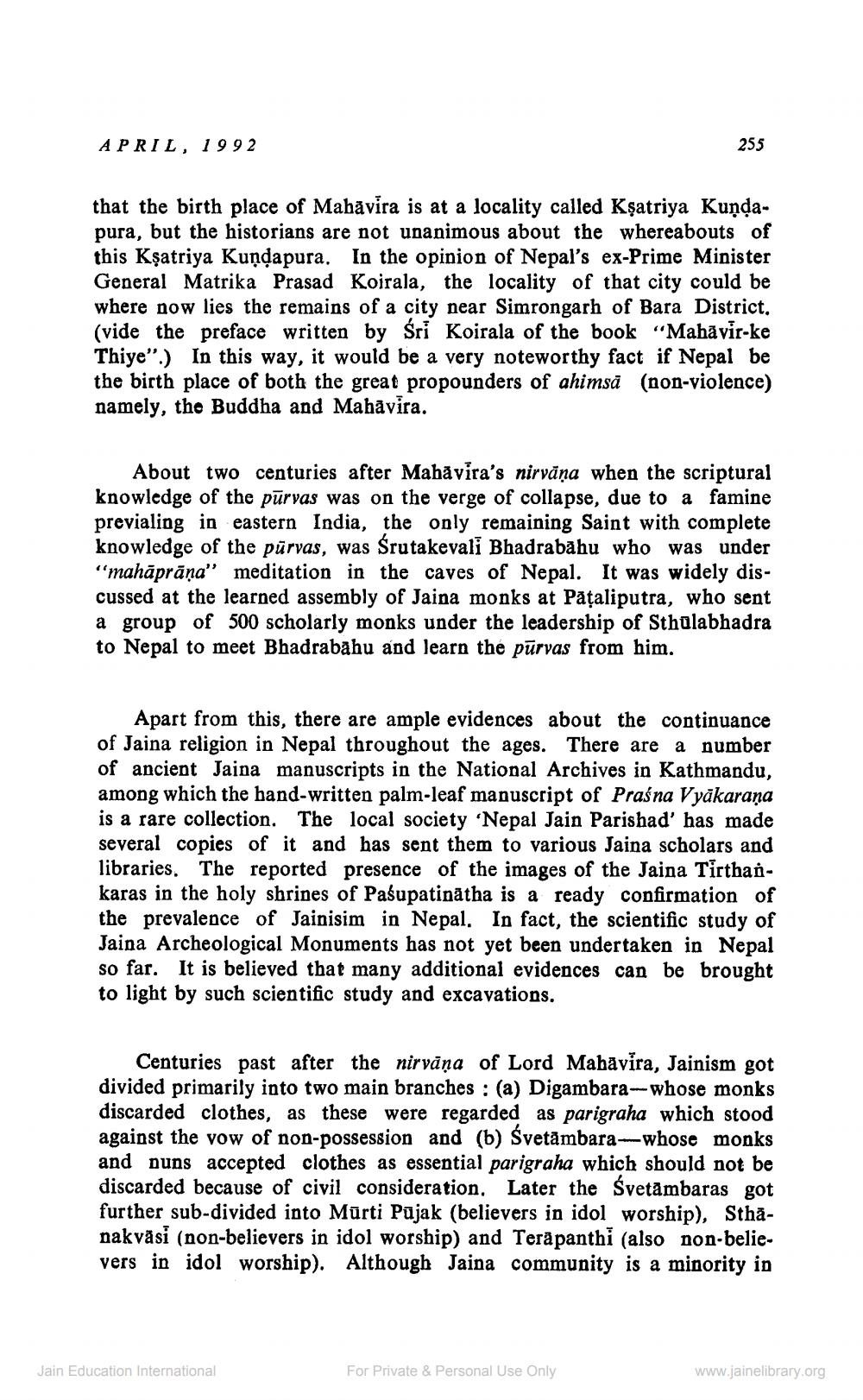________________
APRIL, 1992
that the birth place of Mahavira is at a locality called Kṣatriya Kundapura, but the historians are not unanimous about the whereabouts of this Ksatriya Kundapura. In the opinion of Nepal's ex-Prime Minister General Matrika Prasad Koirala, the locality of that city could be where now lies the remains of a city near Simrongarh of Bara District. (vide the preface written by Śri Koirala of the book "Mahavir-ke Thiye".) In this way, it would be a very noteworthy fact if Nepal be the birth place of both the great propounders of ahimsa (non-violence) namely, the Buddha and Mahavira.
255
About two centuries after Mahavira's nirvana when the scriptural knowledge of the purvas was on the verge of collapse, due to a famine previaling in eastern India, the only remaining Saint with complete knowledge of the purvas, was Śrutakevali Bhadrabahu who was under "mahāprāṇa" meditation in the caves of Nepal. It was widely discussed at the learned assembly of Jaina monks at Pataliputra, who sent a group of 500 scholarly monks under the leadership of Sthulabhadra to Nepal to meet Bhadrabahu and learn the pūrvas from him.
Apart from this, there are ample evidences about the continuance of Jaina religion in Nepal throughout the ages. There are a number of ancient Jaina manuscripts in the National Archives in Kathmandu, among which the hand-written palm-leaf manuscript of Praśna Vyākaraṇa is a rare collection. The local society 'Nepal Jain Parishad' has made several copies of it and has sent them to various Jaina scholars and libraries. The reported presence of the images of the Jaina Tirthankaras in the holy shrines of Pasupatinatha is a ready confirmation of the prevalence of Jainisim in Nepal. In fact, the scientific study of Jaina Archeological Monuments has not yet been undertaken in Nepal so far. It is believed that many additional evidences can be brought to light by such scientific study and excavations.
Centuries past after the nirvana of Lord Mahavira, Jainism got divided primarily into two main branches: (a) Digambara-whose monks discarded clothes, as these were regarded as parigraha which stood against the vow of non-possession and (b) Svetambara-whose monks and nuns accepted clothes as essential parigraha which should not be discarded because of civil consideration. Later the Śvetambaras got further sub-divided into Mürti Pujak (believers in idol worship), Sthanakväsi (non-believers in idol worship) and Terapanthi (also non-believers in idol worship). Although Jaina community is a minority in
Jain Education International
For Private & Personal Use Only
www.jainelibrary.org




